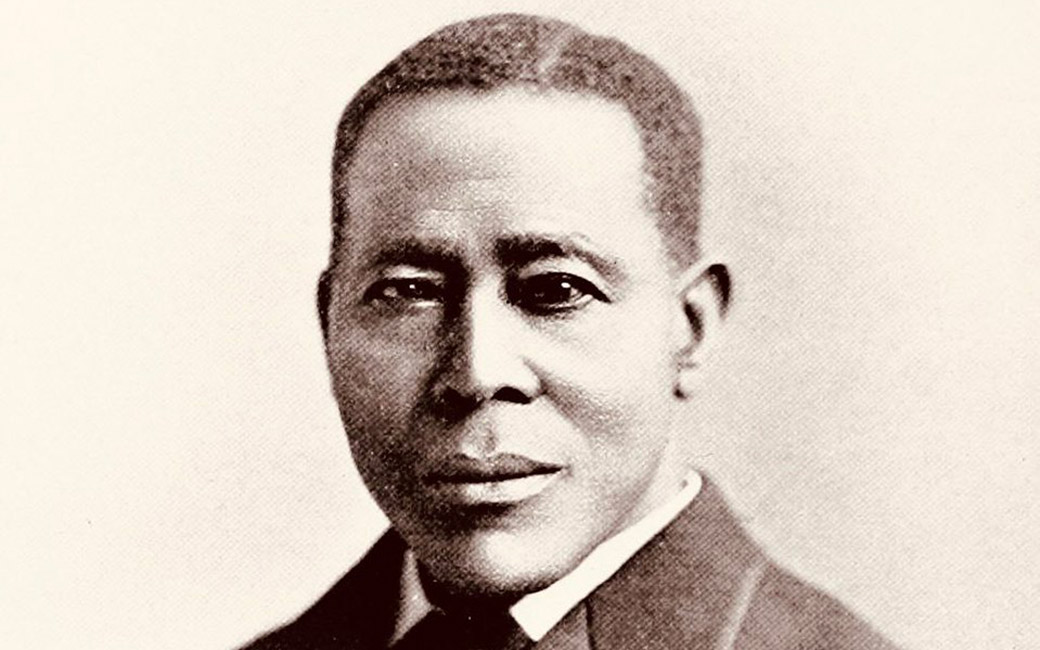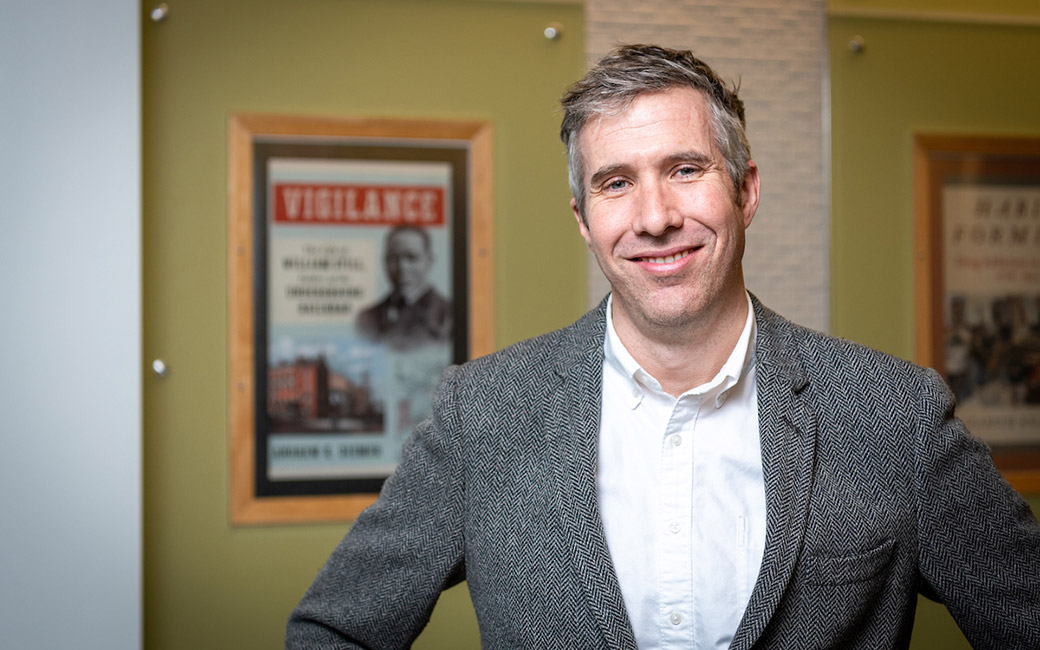Getting to know the father of the Underground Railroad
Research by TU history professor uncovers unknown abolitionist William Still, who helped hundreds escape from slavery
By Rebecca Kirkman on February 21, 2023

Last week, several Pennsylvania state senators announced a resolution to recognize the second week of February as William Still Week in the state.
Such acknowledgment of William Still, an abolitionist born in 1821 who worked as an Underground Railroad agent in Pennsylvania, has increased thanks to research by Andrew Diemer, an associate professor in the Department of History at Towson University.
Within the College of Liberal Arts, he teaches broadly about African American history, but his research focuses on African American involvement in the anti-slavery movement in the period around the Civil War.
In “Vigilance: The Life of William Still, Father of the Underground Railroad,” published in November, Diemer tells the remarkable and inspiring story of William Still, a previously unknown abolitionist who dedicated his life to managing a critical section of the Underground Railroad in Philadelphia, Pennsylvania—the free state directly north of the Mason-Dixon Line—helping hundreds of people escape from slavery.
We spoke with Diemer about his research interests and what we can learn from historic figures such as Still.

What made you interested in researching William Still?
He was someone who kept coming up while researching my first book and in unexpected places. I knew he had been involved in the Underground Railroad, yet he was showing up in all these public spaces—making speeches, writing letters to the newspaper and doing all these things that didn't seem to fit with my expectation that he was operating in secret. So that piqued my interest. And the more I dug, the more I realized this was a person whose significance was larger than simply the Underground Railroad, but that work was bigger and more consequential than people have given him credit for.
Dive Deeper with a Black History Month Lecture
Join Andrew Diemer, associate professor of history, and Donn Worgs, professor of political science and director of the African & African American Studies program, for a conversation about William Still Tuesday, Feb. 28, at 5 p.m., in Lecture Hall room 238 and via Zoom. Learn more (PDF)
Why do you want people to know about his story?
When you go into a bookstore and look at the biographies, you tend to see the same names and faces repeatedly. I am trying to make the case for people who you wouldn't normally read about. William Still’s life is worthy of their attention.
Additionally, William Still tells an important story about how activism unfolds within a Black community. He's the youngest of 18 children born to parents who had previously been enslaved. His mother is a fugitive from slavery, so he grows up in an abolitionist family.
When he moves to Philadelphia, which is where he spends most of his life and his activism really takes root, that activism happens within a robust Black community and is dependent upon its support. Which isn't to say that he doesn't have white allies—the abolitionist movement is interracial. But his part is built upon the Black community of Philadelphia, which then stretches throughout the country. The Underground Railroad is a network of people who are committed to doing this work. Still is connecting them through his activism.
Is Still’s work different from other figures in the Underground Railroad?
The figures we know from the Underground Railroad tend to be small parts of it. Harriet Tubman is a hugely important ally of Still. She has a piece of this [network]. Still is taking all those pieces and connecting them in a way that makes them all more effective.
Why has Still’s story been relatively unknown until recently?
There are two main reasons I think this is the case. The first is he consciously didn't celebrate his own role in his story. When you look at his book he publishes about the Underground Railroad, it's almost 800 pages of stories of people who ran away from slavery. This is frustrating for a historian because you really want him to talk more about himself. I think it's a conscious choice. He doesn't want to put a spotlight on himself, he wants to put it on the people who took these risks and did this amazing work to run to freedom.
The second thing is the nature of his work lends itself to being overlooked compared to an activist like Harriet Tubman, who is traveling into Maryland and facing the danger of slave catchers. His work is being done while sitting at a desk writing and connecting people.
What do you hope others come to understand about his life and work from your research?
Still was a storyteller and a historian. He really wanted to make sure he wasn't the focus of the stories of the Underground Railroad, because he understood the power of making the case that the people who we should pay attention to were the hundreds of remarkable, intelligent, creative, courageous people [seeking freedom]. There are real implications of telling the story that way. Understanding his story is powerful because he understood the power of these stories.
How does your research inform your teaching?
The book I wrote is published through a trade press, so it's not written for academic audiences. Part of writing a book like that is thinking about how you communicate to the broadest possible audience. On a certain level, what you're doing every day in class is trying to take these ideas historians are hashing out together and translate them in a way that is approachable for students. I learned how to write for a broad audience via teaching, but I think writing for a broad audience has also helped me think about storytelling and accessibility in class as a way of communicating ideas that are sometimes difficult and dry.